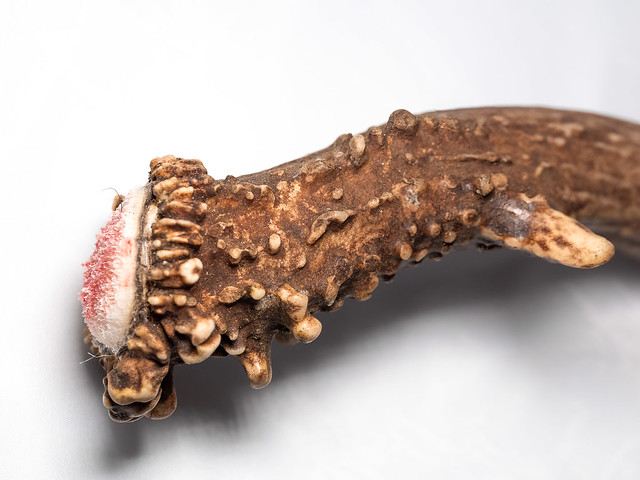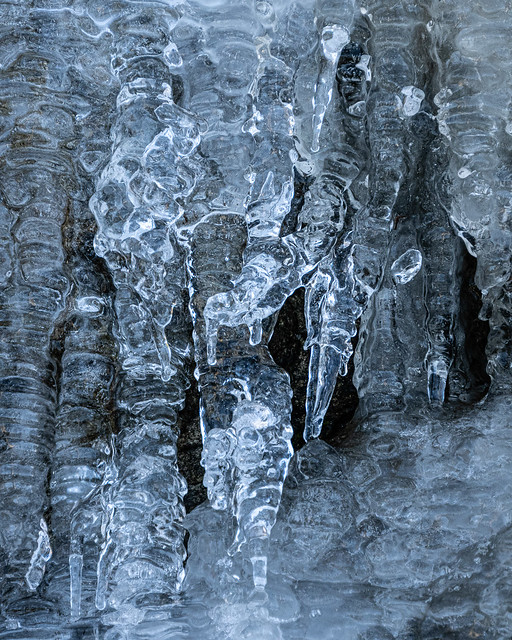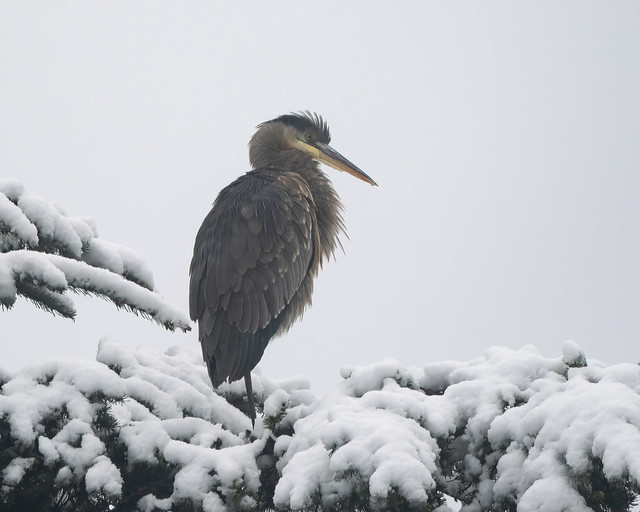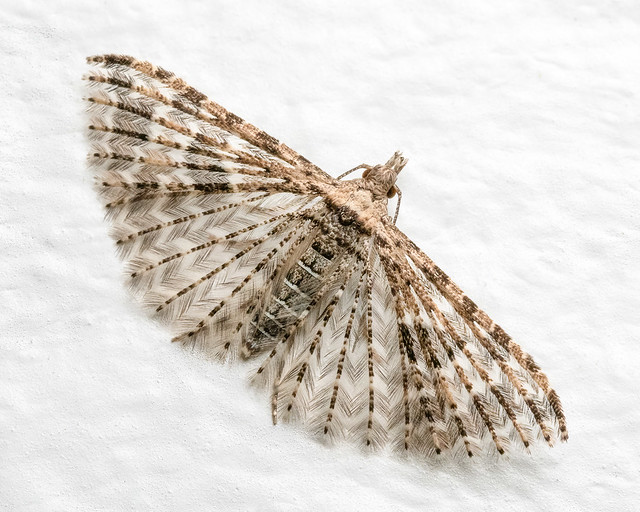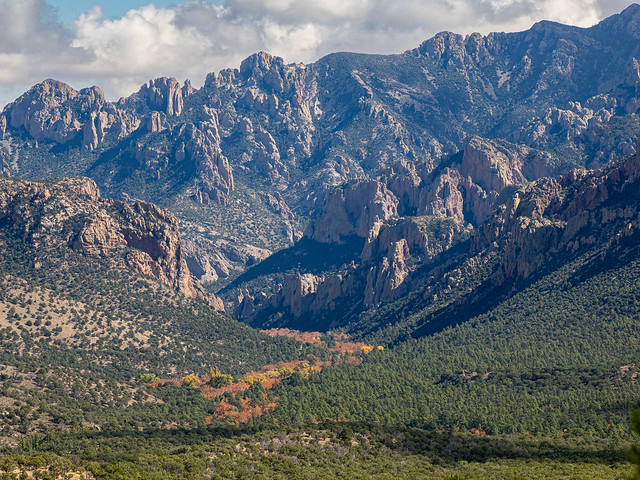
The Chiricahua Mountains are in the south east corner of Arizona. They are sometimes referred to as one of the "sky islands", rising 6000 feet above the desert around them. This gives them a variety of climates - five of the nine different life zones are found here. The area attracts bird watchers to see the 375 species of birds. Perhaps the last jaguar in the United States is found here.
There is a surrounding national forest, a wilderness area, and a smaller national monument. I think the monument on the west side is probably the more popular part but I met some people who had a home in Portal on the east side, so that's where we've visited before and did again on this trip. This was the only place we spent two nights in the same place on this trip. It was relatively quiet and we enjoyed some nice hikes.
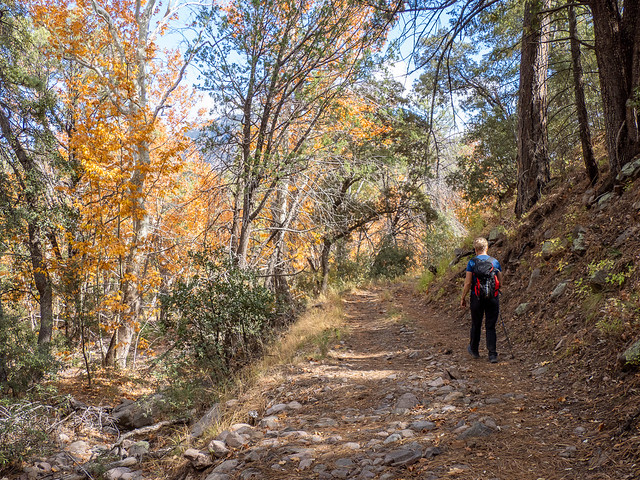
I think we saw more birdwatchers than kinds of birds. As much as I like photographing birds, I'm not a serious birder. Mostly we saw Mexican Jays and Acorn Woodpeckers.


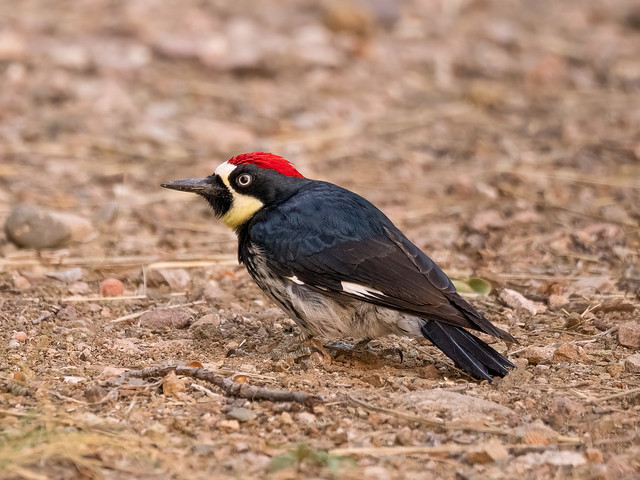
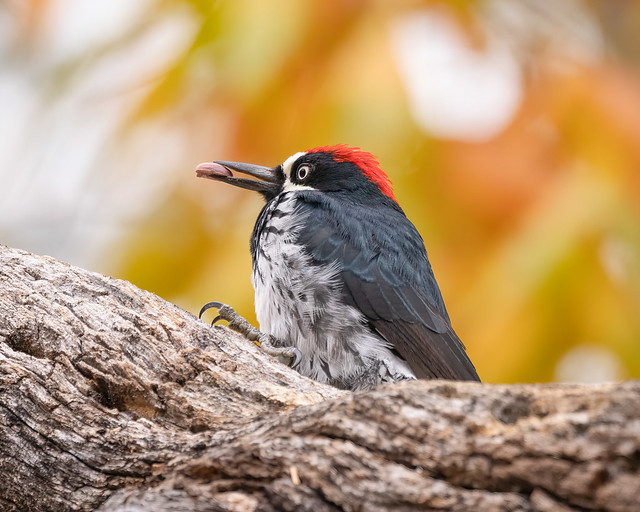
Acorn Woodpeckers store their acorns in holes they drill (and reuse) in "granary" trees. As the acorns dry out and shrink they move them to smaller holes, requiring considerable maintenance. They also have to defend them from other birds. They are cooperative breeders living in groups of up to 15 birds.

It was fun to watch this group of wild turkeys scratching through the dead leaves. I'm not sure what they were finding to eat - insects? seeds?
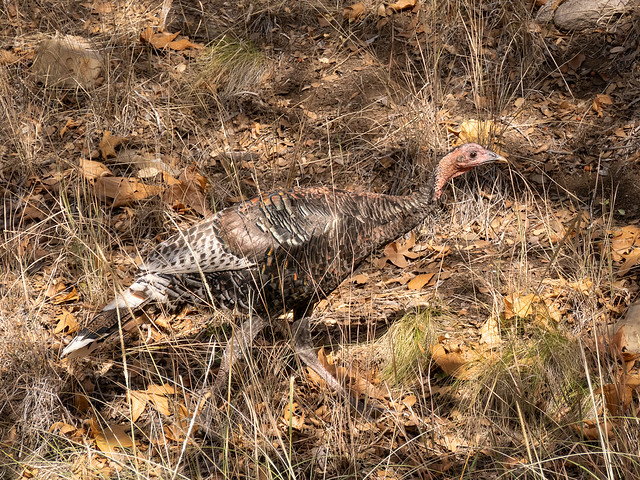
There were also some interesting plants. I think these are Mountain Yucca fruit: (roughly pear sized)

There were some tall agave seed stalks. They are sometimes called "century" plants because they only flower once, at the end of a long life (although not necessarily a century) and then they die. If you shook the stacks the seeds would come raining down.

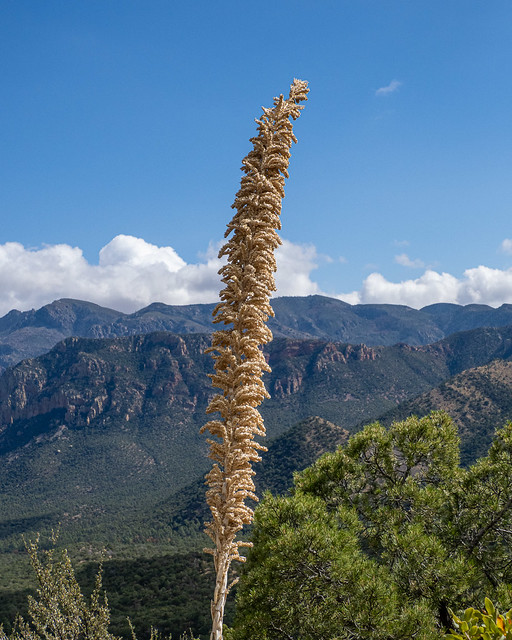

There was a lot of bear poop on one of the trails we were on. Luckily we didn't see any bears. They seemed to be eating a lot of seeds (juniper berries?) which they weren't digesting too well.

Most of the trees were conifers, but there were enough other trees, especially down by the creeks, to give some nice fall colors.

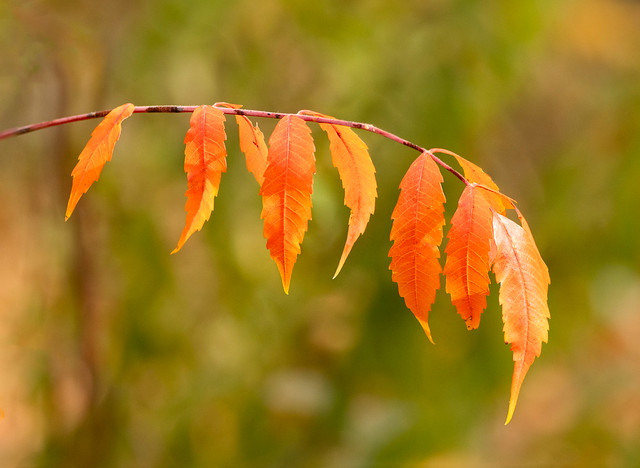
Although it was getting cool at night up in the mountains, there were still a few insects around. Unfortunately no one on iNaturalist has identified this interesting beetle:
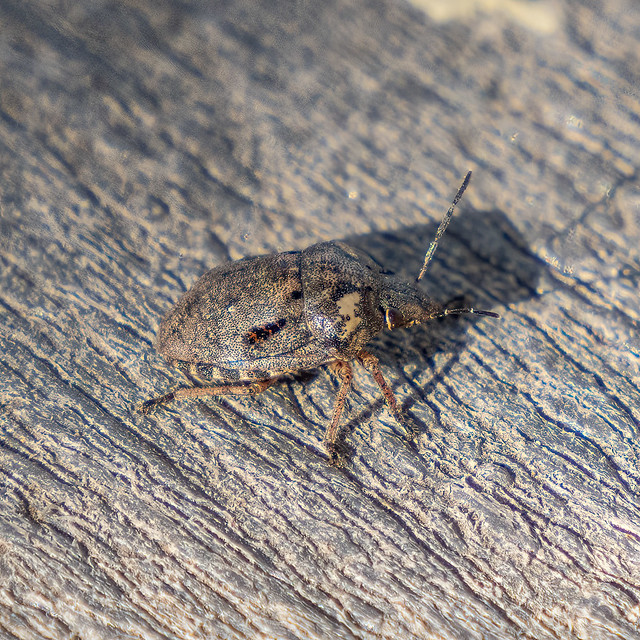
Water striders are tricky to photograph as they tend to zip around constantly. This one happened to pause long enough to catch. (with my long telephoto lens)

There were lots of deer around, not too concerned about humans. (no hunting here)
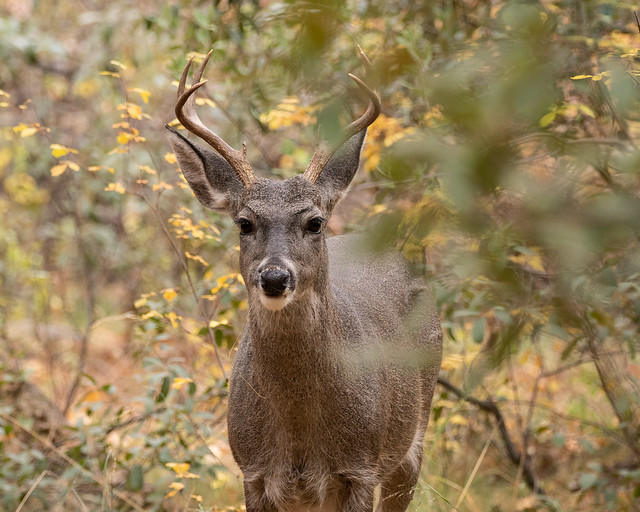
Also see Shelley's post
See all 37 photos in this batch.

